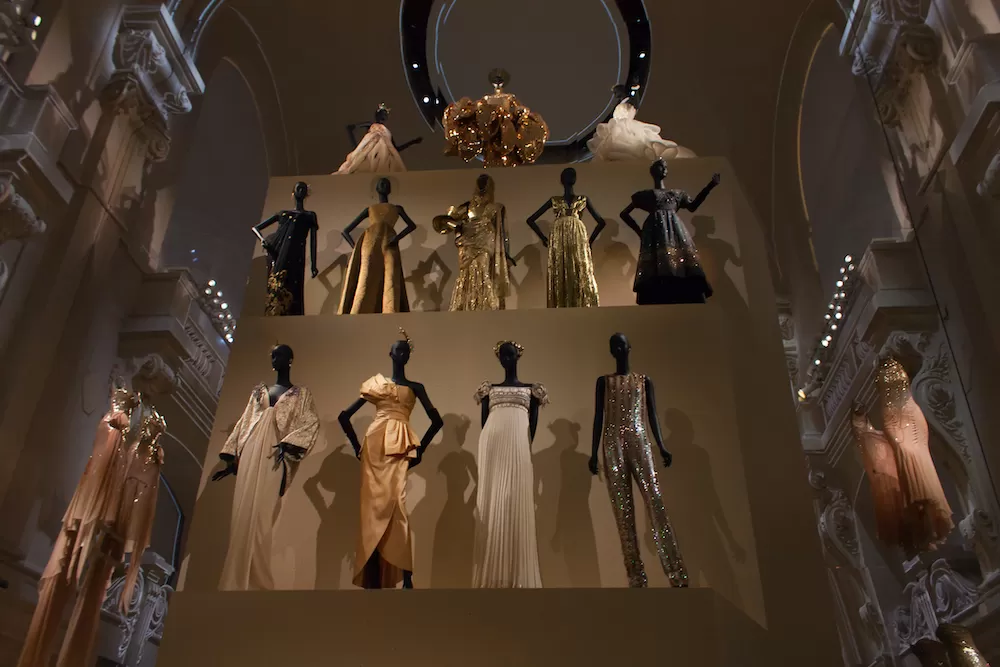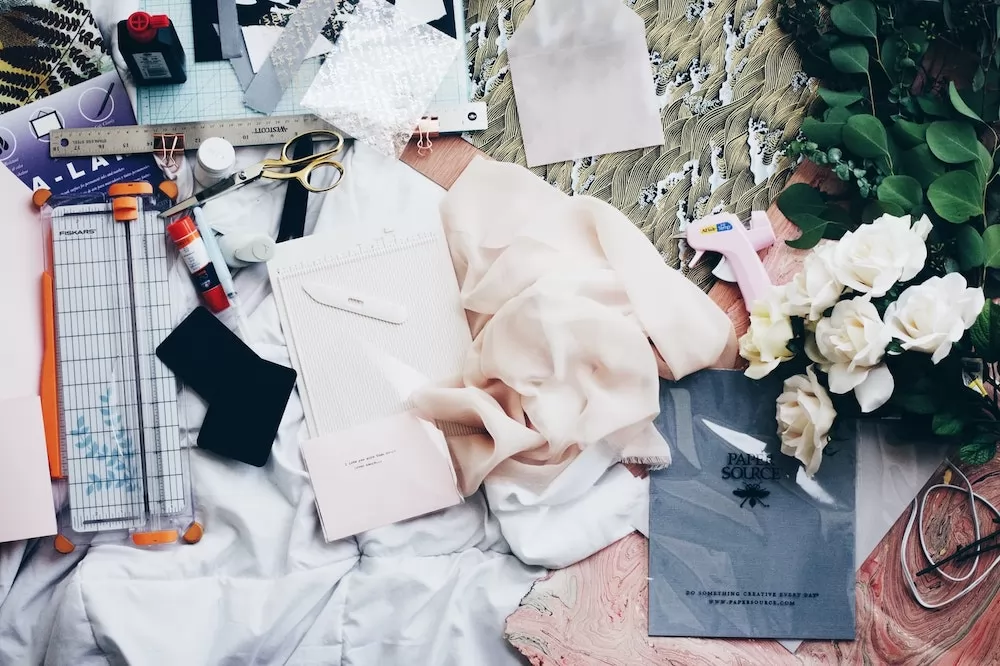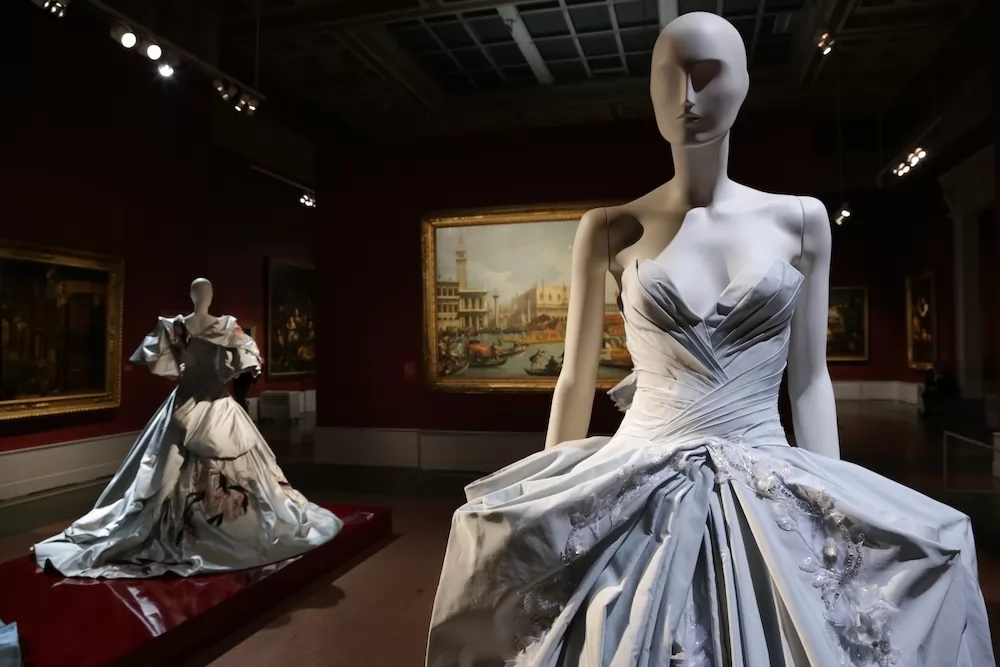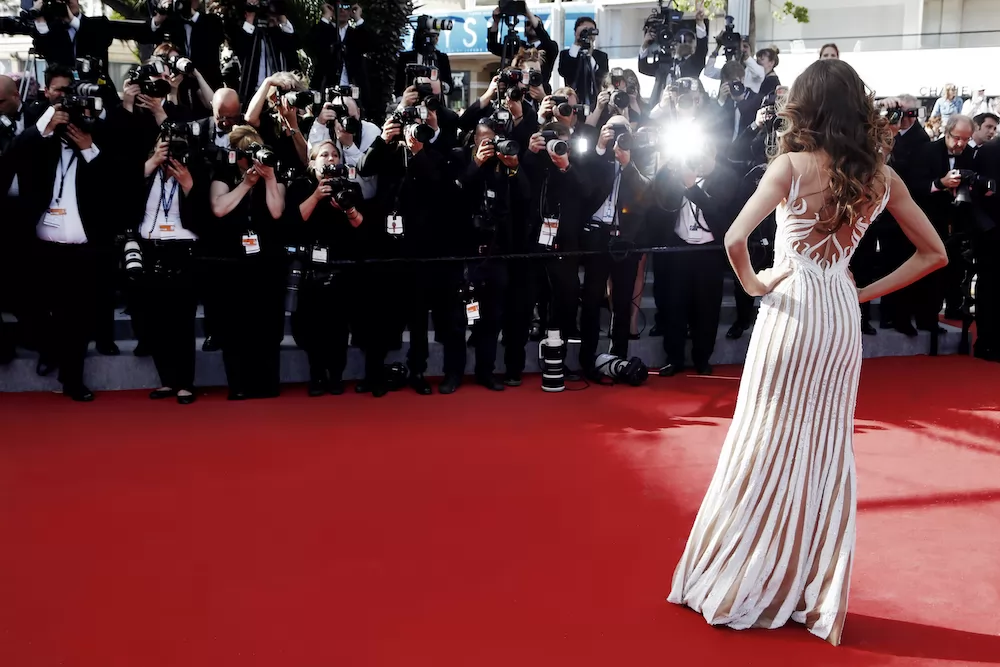Every January and July, Paris hosts its annual Haute Couture Week. Not to be confused with its ready-to-wear fashion weeks, this particular event is a lot more exclusive. Only a handful of designers get to join this prestigious week, many of which are established labels called
maisons. They're some of the world's biggest and most beloved brands, due in large part to their decades-old legacy. And many of them started with haute couture. But what is haute couture, exactly? What about it inspired awe, fantasy, prestige, and luxury? And why is it so exclusive? Well, here's what you need to know about.
The Craft of Haute Couture
What separates haute couture from the rest of the different categories in fashion is that it's handmade. Haute couture garments are made by hand, accomplished through traditional techniques that have been passed down from generation to generation. While ready-to-wear relies on machines and factories to complete the garments, haute couture is the complete opposite. It's also safe to say that there are now two pieces of haute couture garments that are exactly the same. Each piece remains unique and one-of-a-kind, deserving of the hefty price tags that they come in. They can differ in big or in the most minute details.
Guidelines of Haute Couture
Though it can be said that any handmade garment can pass as haute couture, the term itself is legally protected by the French government. By law, only pieces made in Paris can truly be considered haute couture. And
designer brands which are commonly referred to as '
maisons' (houses) can only use the term haute couture if they're officially recognized by the Chambre Syndicale de la Haute Couture. Beyond the recognition, other guidelines for haute couture include that the design has to be made-to-order for private clients and has to hold multiple fittings before purchase. The
atelier, or the workshop where the garment is produced, has to operate in Paris and should employ no less than 20 craftsmen, tailors, technicians, and 15 staff members.
The History of Haute Couture
Ironically enough, it was actually an English dressmaker by the name of Charles Fredrick Worth who coined the term 'haute couture.' Around the mid-19th-century, Worth worked as a tailor and dressmaker for elite clients in Parisian high society. He revolutionized dressmaking by allowing his clients to take part in the design process. He allowed them to choose the colors, fabrics, textiles, decorations, and the like. And as the retail industry followed suit, he helped establish the Chambre Syndicale de la Haute Couture as the governing body of French high fashion.
Since Worth's time, haute couture became the standard for dressmaking in Paris and beyond. And it was through this craft that fashion saw its many revolutions. From Paul Poiret foregoing the corsets and
Gabrielle 'Coco' Chanel introducing simplistic styles to Elsa Schiaparelli combining art and fashion with her avant-garde works, Paris Haute couture helped change the way the world dress. Its most notable era, the 'Golden Age of Haute Couture,' which was from 1947 to 1957, saw the rise of many legendary designers who established their own
haute couture houses such as Christian Dior, Pierre Balmain, Madame Grès, Cristobal Balenciaga, and Hubert de Givenchy, among many others. That time established Paris as the fashion capital of the world.
Haute Couture Fashion Week in Paris
Today, despite the dominance of
prêt-à-porter (ready-to-wear) in the fashion industry, haute couture remains ever relevant. Paris still holds bi-annual fashion weeks to let today's haute couture designers show off their latest creations. The first is held in late January where the spring-summer collections are shown. While the second is held in late July for the autumn-winter collections. Since haute couture is still as exclusive as ever, these events are highly-publicized, with various celebrities and influences taking the front row seats during the shows. Thanks to its massive publicity,
French jewelry brands have also shown their latest and most exclusive pieces during haute couture week, called '
haute joaillerie.'
Buying Haute Couture
Unlike in ready-to-wear, where people can simply go to the shops or go online to buy the clothes, buying haute couture is a more complicated process. Firstly, fashion houses won't just welcome anyone to buy their haute couture. Clients will have to set up an appointment with them in order to see the latest and best pieces from their collections. After that, multiple fittings are done to ensure that the made-to-measure piece will fit the client's body perfectly. Some brands even go so far as to make new fitting forms with the measurements and dimensions of their most trusted and loyal clients.
You may have heard about haute couture before, especially if you're into fashion, but do you know what it means? More than just an age-old craft in dressmaking, it's actually a vital part of the industry. One that remains ever exclusive and prestigious to this day.



